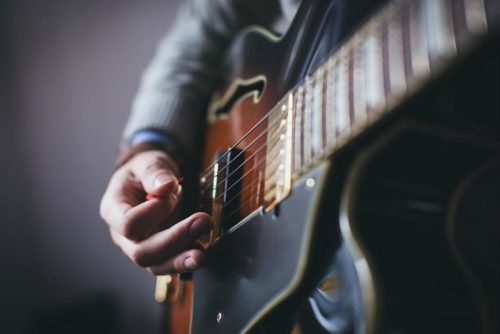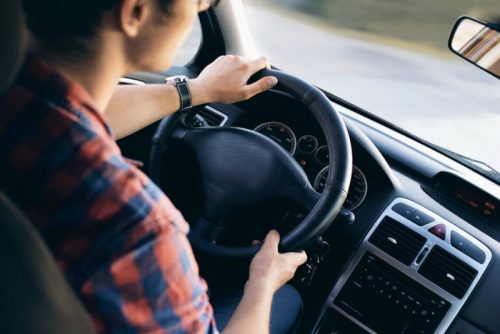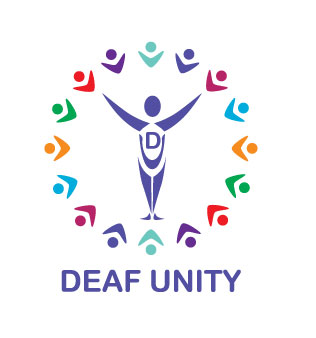There are a number of myths and misconceptions about deafness that people with hearing loss encounter every single day. In this article, we reveal the Top 8, and shed light on what it really means to be D/deaf in the 21st century.
Spoiler: D/deaf people can do everything hearing people can do, except hear properly!
The world of deafness is a mysterious one – both literally and metaphorically. Unlike other disabilities, deafness is not something you can see, or hear! It’s very much a hidden disability that is severely misunderstood, and as a result of this, hundreds of myths and stereotypes exist.
For many people living with deafness, not a day goes by where they don’t come across unrealistic judgements and views on their ability, how they live and how they communicate with others.
Here we debunk eight of the most outrageous myths about deafness:
1) Hearing aids restore hearing loss
It’s widely believed that wearing hearing aids is very similar to wearing glasses – hey presto, you can hear again!
WRONG.
Although they are both senses, losing your hearing is much different to losing your vision, and unfortunately hearing devices are unable to restore hearing to normal. Even now, when hearing technology is at it’s most advanced, there’s no device that can repair the damage to the hair cells of the inner ear (the cause of hearing loss). Once these hair cells are damaged or die, they don’t regenerate, which means they can no longer send sound signals to the brain.
Digital hearing aids work by amplifying sounds coming into the ear – but unlike inner ear hair cells, they are unable to process complex sounds effectively, so typically the brain picks up on everything. This is why people with hearing loss who wear aids tend to find it difficult to concentrate and hear clearly in busy environments, where background noise makes it tricky to focus on particular sounds.
2) Deafness only affects old people
While deafness is a common age-related health problem, the true reality is hearing loss can begin at any age – for all kinds of reasons. According to Action on Hearing Loss, in the UK 3.7 million people aged between 16 and 64 have some form of hearing impairment. Common causes of sensorineural hearing loss (when the hair cells are damaged) include long-term exposure to loud sounds, the genes you inherit, disease (such as meningitis and Meniere’s disease) and head injury.
3) D/deaf people can’t listen to music
 There’s the notion that music can only be heard, and therefore can only be appreciated by hearing people. It’s often quite a surprise for people to learn that d/Deaf people not only enjoy music, singing and playing instruments; many are leading successful careers as composers and performers. And let’s not forget, composer and pianist Ludwig van Beethoven was deaf but he has produced some of the most powerful and recognisable compositions the world has ever known.
There’s the notion that music can only be heard, and therefore can only be appreciated by hearing people. It’s often quite a surprise for people to learn that d/Deaf people not only enjoy music, singing and playing instruments; many are leading successful careers as composers and performers. And let’s not forget, composer and pianist Ludwig van Beethoven was deaf but he has produced some of the most powerful and recognisable compositions the world has ever known.
So how do D/deaf people listen to music? The experience of sound is different for so many people – including those with all levels of deafness. Music is very multisensory and studies show that people with deafness are able to feel music within the vibrations in the same part of the brain that hearing people use when they listen to melodies and lyrics. It’s just a different experience.
4) Deaf people don’t talk
It’s quite a surprise for many people to find some D/deaf people talk, and they do so very well. This will depend greatly on the background of the individual and the type of deafness they have. Some deaf people will also have lessons with a speech therapist to improve their speech.
“I think many people get confused by people like me, who are deaf and use sign language, but can also talk,” says Abdi Gas, Deaf Unity’s CEO. “I have been in many professional situations where I have a sign language interpreter and am signing, but then I might use my voice at some point. Sometimes I don’t speak at all and interact solely in sign. People don’t really understand that it is my right to choose my mode of communication depending on what is needed, desired or beneficial at the time.”
5) D/deaf people can communicate by reading lips
It’s true that people with hearing loss will focus more on reading people’s lips, and it’s a vital skill for them to have, but lip reading can be difficult to learn and it’s impossible to catch everything someone says by simply watching their lips.
Lip reading is the learning of the movements of the mouth, teeth and tongue and the shapes of certain words and letters. It also involves recognising and interpreting body language, expression and gesture and using context and common sense to put sentences and speech together.
While this is complicated in itself, it’s worth remembering that lipreading requires reasonably good eyesight and it’s impossible to lipread in the dark – or when someone is mumbling or covering their mouth. Plus some lip shapes like ‘f’ and ‘v’ look exactly the same, so some words can be easily misinterpreted.
This video shows just how tricky it can be to lip read…
6) All hearing loss is the same
If only it were so simple: one cause, one type and one cure for hearing loss. Unfortunately, this is not the case as hearing loss happens to be one of the most complex health problems with no definitive cure or preventable remedy. There’s actually various levels and types of hearing loss, which fall into two categories (Sensorineural and Conductive), and no specific rights or wrongs about the words used to describe them.
Sensorineural hearing loss – this is when the sensitive hair cells inside the inner ear (cochlea) die, or when damage occurs to the auditory nerve. This can be caused by factors like genetics, a trauma to the head or age.
Conductive hearing loss – this is when sounds are unable to pass from the outer ear to the inner ear, and is often the result of a blockage like ear wax.
Some of the most commonly used terms to describe deafness include:
- Hard of hearing describes those who have lost some, but not all of their hearing
- Deaf (with an upper case ‘D’) refers to people who communicate using primarily sign language and consider themselves full members of the deaf community.
- deaf (with a lower case ‘d’) refers to anyone with hearing loss, whether they have been born deaf or have become deaf during their lives. They mix well in the hearing world and communicate orally, but may also use sign language.
- Hearing impaired describes anyone with hearing loss
- Acquired hearing loss describes those who were born with hearing but lost some or all of their ability
- Acquired profound hearing loss describes those who were born with hearing but lost a significant amount of their hearing
7) D/deaf people can’t go to the cinema or watch TV
There is absolutely no reason why people with hearing loss can’t enjoy going to the cinema or watching TV like their hearing peers, but unfortunately there is a shameful lack of subtitled screenings and reliable closed captioning options which is making it impossible for them to enjoy these everyday activities. Even in our digital age, when technologies to improve these services are widely available, cinemas and TV organisations are letting d/Deaf people down and not complying with disability legislation.
Currently, people with deafness rely on a website/app called Your Local Cinema to find local subtitled viewings, but there’s very limited choice and not always guaranteed these listed viewings will be subtitled. While TV channels like 4OD and BBCiPlayer are increasingly improving their services to include audio description options, these can only be used on desktop computers and not mobile devices.
8) It’s not safe for D/deaf people to drive
 Where does this notion come from!? It’s true that we need good senses to drive, but being able to see is far more important than being able to hear when it comes to navigating the roads.
Where does this notion come from!? It’s true that we need good senses to drive, but being able to see is far more important than being able to hear when it comes to navigating the roads.
For many people with hearing loss, their peripheral vision is more highly developed than in hearing people, which ultimately improves their driving ability. Furthermore, a lot of deaf people say that lack of hearing makes them more visually aware and cautious when driving – so you’re probably in safer hands sitting in a car with a d/Deaf person than you are a hearing person.
What other common misconceptions about deafness have you experienced? Tell us in the comments section below.


Lol it’s funny reading this.
Am deaf wearing hearing aid. Reading this at the very moment after driving to work, listening to music.
Love going to the cinema & watch tv.
I can speak better than most of my deaf friends. I can & relied on lip reading and understanding basic sign language.
That was very interesting. As a musician I knew many deaf people enjoy and/or perform music, but I still learned a lot from this article
I’m a young adult and I wear hearing aids. I’m hard of hearing but I have had questions like:
“Are you deaf?” No
“Can you lip read?” Not really
“Do you go to discos?” No. Not my type but I’m staying away from loud concerts and discos to protect my hearing. The only loud concert I’ve been to is by the Proclaimers
Not sure if anyone is interested but I can’t understand why the hearing community doesn’t install a chat service along with there phone numbers so people with hearing problems can communicate with the company’s different departments. For example, let say you have a question on your invoice, wouldn’t it be nice to be able to live chat with someone in accounting department and go over the invoice in detail and sort it out quickly. Chat service company wide could save time and money. So what do you think? Let me know, thanks
i think hearing impairment is basically pathopsychological issue/ disease bcoz added to organic cause hearing issue augmented by psychological functional factors ..becoz when a person knows about our issue they started talking too loud, supposing that with loudness we can hear …its wrong ..too loudness is really painful condition & though we hear voices but can not interpret exact spoken words ( so voice hear plus interpret words only solve issue) .
so interpreting hearing words Correctly depends upon loudness plus quality of voice tone..as loss of level is different so those who lives with hearing loss people must note exact level of loudness & tone to make it better for listening or understanding & most important it gives confidence & comfort to people like us..Thanks ..
Question. What do you do when there are no subtitles at the movies? Are there devices you can use to still be able to watch the movie or do you have to leave and wait to watch it at home? I feel like with the amount of technology we have now, there is no reason why something cannot be created to ensure every d/Deaf and Hard of Hearing person can enjoy any/every theater.
I understand how hard it is to read lips. Deaf people have to either read lips or use sign language to understand people
my mom is hard of hearing. I remember one time we went to see a movie and she asked for a captioning device. I can’t remember what it was called but it was like a stick with a screen at the top that was synced to the movie and ran captions. she just held it in her lap so she could see both it and the movie at the same time. It looked like it worked pretty good.
I don’t go to the movies often with her so I don’t know/remember if this is a thing a lot of theaters have, but definitely that one theater had it. hopefully they become more widespread. in any case I hope this answers your question even though its pretty late of a response haha